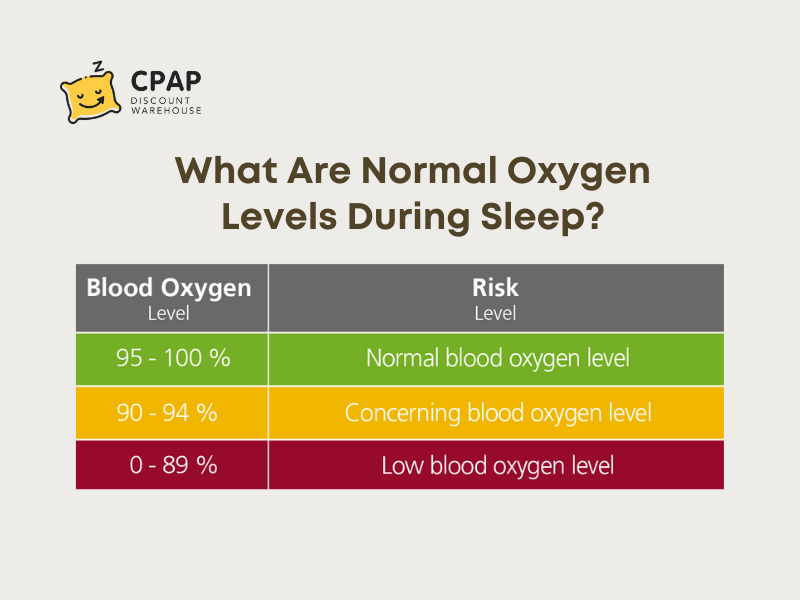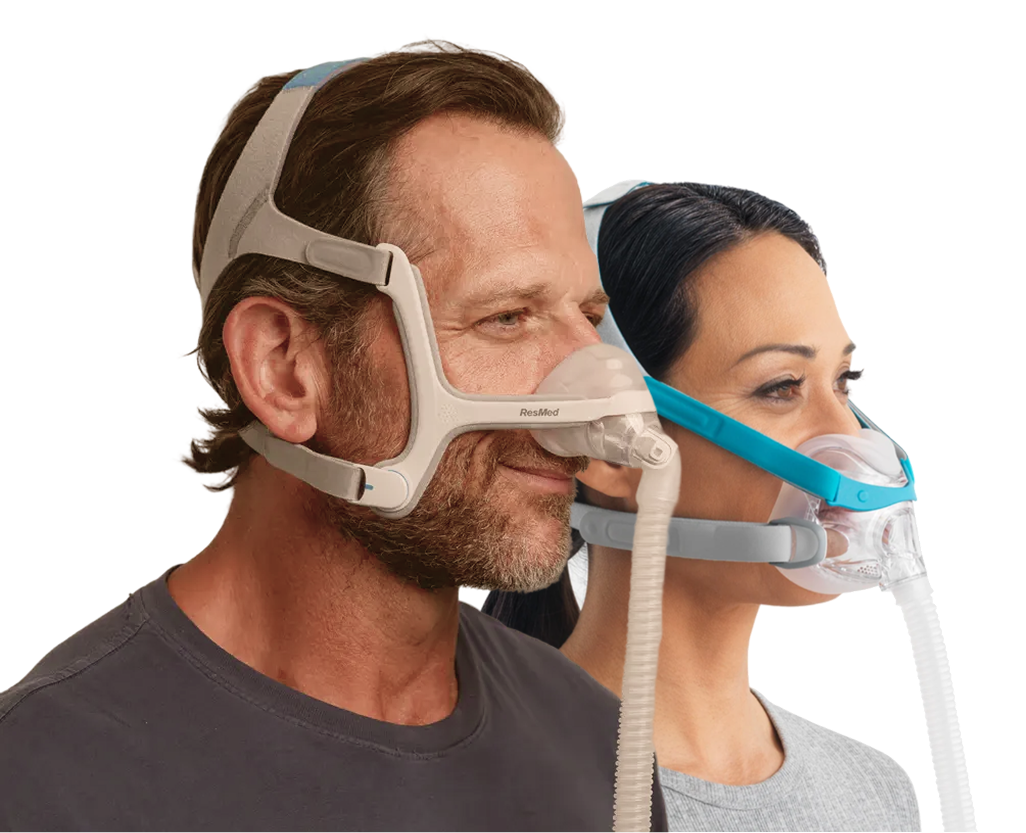What are normal oxygen levels during sleep? You are measuring the oxygen saturation in the blood, which would demonstrate the sleep breathing-related problems. Most of the time, the standard definition of normal oxygen levels is not available. The drop in oxygen levels during sleep apnea to 88% or below for a couple of minutes can be indicative of a sleep condition such as sleep apnea. Such people breathe often; tracking oxygen overnight is critical to know for their health. Breathing easy with trusted tools and expert support can count on CPAP Discount Warehouse to be there for you.
Understanding Blood Oxygen Saturation
Blood oxygen saturation is perhaps the most important indicator concerning how well oxygen gets to the vital organs within your body. Careful monitoring of your oxygen saturation levels can lead to the early detection of respiratory illness, especially in individuals who suffer from sleep apnea or those who suffer from chronic lung disease or other respiratory disorders.
What Is Blood Oxygen Saturation?
What are normal oxygen levels during sleep? Blood oxygen saturation, or SpO₂, refers to that value as the agreed-upon definition of blood oxygen saturation in terms of the fraction of hemoglobin in the blood that is bound to oxygen; it usually ranges from 95% to 100%.
When oxygen saturation drops below 90%, it’s known as hypoxemia which is a condition that may lead to fatigue, shortness of breath, and in severe cases, organ dysfunction. During sleep, oxygen levels may decrease, especially in individuals with conditions like obstructive sleep apnea (OSA). Repeated drops to 88% or lower for five minutes or more during the night are a potential warning sign and may require treatment.
How Is It Measured?
There are two major methods to observe the blood saturation with oxygen:
| Description | Advantages | Best for | |
| Pulse Oximeter | It is a small tool that is clipped onto the finger to estimate your SpO₂. Infrared lights are used to measure oximetry, heart rate, as well as levels of oxygen. | Quick, painless, portable | To people with CPAP machine or mild to moderate breathing problems. |
| Arterial Blood Gas (ABG) Test | This is a test performed under clinical conditions. The results yielded by the blood gases are much more accurate, both in terms of the oxygen and carbon dioxide concentrations in the blood as well as the pH. | Precise and detailed | Hospitalized patients or people needing some in-depth diagnostic information |
Normal Oxygen Levels During Sleep
When you rest, your lungs and blood work together to make sure your brain and vital organs get enough oxygen. It is normal for oxygen levels to be a bit lower during sleep, especially in the deeper stages. But if the oxygen levels drop a lot, it can be a sign of a problem. Knowing what's normal and what's not can help you sleep better and spot health problems before they get worse.
What are normal oxygen levels during sleep? Blood oxygen levels typically range from 95% to 100% in healthy adults during sleep. Brief drops to 91-95% are normal during deep or REM sleep, but consistent levels of 88% to 91% may indicate hypoxemia, which requires medical attention. If levels fall below 88%, it could signal sleep apnea, leading to disruptions, fatigue, and cardiovascular issues
Variations Due to Age, Altitude, and Health Conditions can affect blood oxygen level. Aging may slightly reduce oxygen levels, and higher altitudes can lower oxygen due to thinner air. Conditions like COPD, asthma, or sleep apnea can cause more significant drops, requiring regular monitoring.

Causes of Low Oxygen Levels at Night
Common causes of low oxygen during sleep include:
+ Obstructive sleep apnea (OSA) is a leading cause of nighttime oxygen drops. It occurs when throat muscles relax during sleep, temporarily blocking airflow.
+ Chronic Lung Diseases (e.g., COPD): People with chronic obstructive pulmonary disease (COPD), asthma, or other respiratory conditions with damaged lungs struggle to maintain oxygen levels.
+ Obesity hypoventilation syndrome (OHS) is a condition caused by extra weight which puts pressure on the lungs and chest.
+ Medications: Opioids, sedatives, and muscle relaxants can suppress breathing rate or depth.
+ Pneumonia and other lung infections can temporarily reduce how much oxygen your lungs can take in.
+ Smoking is bad for your lungs. It can make it hard for your body to get oxygen.

>>> How does sleep affect mental health?
Symptoms and Risks of Nocturnal Hypoxemia
Nocturnal hypoxemia is a drop in blood oxygen levels during sleep. If your blood oxygen levels drop too low while you're asleep, you might have symptoms that make it hard to sleep and feel tired during the day. Look out for these signs:
+ Morning headaches.
+ Waking up feeling tired.
+ Shortness of breath when waking up.
+ Excessive daytime sleepiness.
+ Memory issues.
+ Frequent nighttime awakenings or restlessness.
+ Gasping, choking, or snoring during sleep.
+ In more severe cases, Bluish tint to the lips, fingers, or toes.
If untreated, it can lead to serious health issues, including heart problems (high blood pressure, arrhythmias, heart failure), cognitive decline, increased dementia risk, and metabolic disorders like insulin resistance and type 2 diabetes. It’s especially risky for people with respiratory conditions like COPD or asthma.

Monitoring and Managing Oxygen Levels
Maintaining healthy oxygen levels during sleep is essential for overall health. Drops in oxygen saturation can lead to serious issues, especially for individuals with sleep apnea or chronic lung disease. Monitoring these levels at home and seeking medical advice when necessary can help prevent complications.
Home Monitoring Techniques
A pulse oximeter is a simple, portable device that clips to your fingertip and measures oxygen saturation. It's ideal for home use, providing instant results and tracking oxygen levels over time. Advanced models can monitor overnight fluctuations, while sleep tracking devices offer additional insights into sleep patterns and breathing.
When to Seek Medical Advice
If your oxygen levels fall below 90% during sleep or if you experience symptoms like shortness of breath, morning headaches, or excessive daytime fatigue, consult a healthcare provider. A sleep study may be recommended to diagnose conditions like sleep apnea or COPD, which can cause drops in oxygen levels during sleep.
Treatment Options (e.g., CPAP, Oxygen Therapy)
For consistent low oxygen levels, treatments like CPAP therapy or oxygen therapy may be necessary. CPAP keeps airways open, preventing oxygen drops, while oxygen therapy helps individuals with chronic lung conditions maintain adequate oxygen levels. Lifestyle changes such as weight loss, quitting smoking, and staying active can also improve oxygen levels.
Preventative Measures for Maintaining Healthy Oxygen Levels
If you find that you are not getting enough oxygen when you are asleep, there are a few things you can try to help your body get more oxygen and sleep better:
+ Sleep on your side or elevate your head can help open your airways.
+ Use a CPAP or BiPAP machine: For people with sleep apnea or certain respiratory conditions can keep airways open and ensure adequate oxygen levels throughout the night.
+ Avoid alcohol and sedatives before bed: These substances can slow your breathing and increase the risk of low oxygen levels
+ Stop smoking: can improve lung function and oxygen levels over time.
+ Keep your bedroom air clean: Use an air purifier to reduce allergens, dust, and pollutants that may affect breathing.
+ Exercise regularly: Physical activity can strengthen your lungs and heart, helping your body use oxygen more efficiently
+ Manage underlying health conditions: Conditions like asthma, COPD, or heart disease can interfere with oxygen levels at night
>>>> Sleep Disorders: Types, Symptoms, Causes and Treatments
Conclusion
Maintaining healthy oxygen levels is vital, especially during sleep. Simple lifestyle changes - like regular exercise, healthy weight management, quitting smoking, and good sleep habits - can greatly enhance oxygen saturation. Regular check-ups help detect issues like sleep apnea or COPD early. Staying proactive ensures your body gets the oxygen it needs to function well and avoid complications. For trusted CPAP machines and oxygen therapy solutions, CPAP Discount offers a wide selection to support better breathing and improved sleep.






